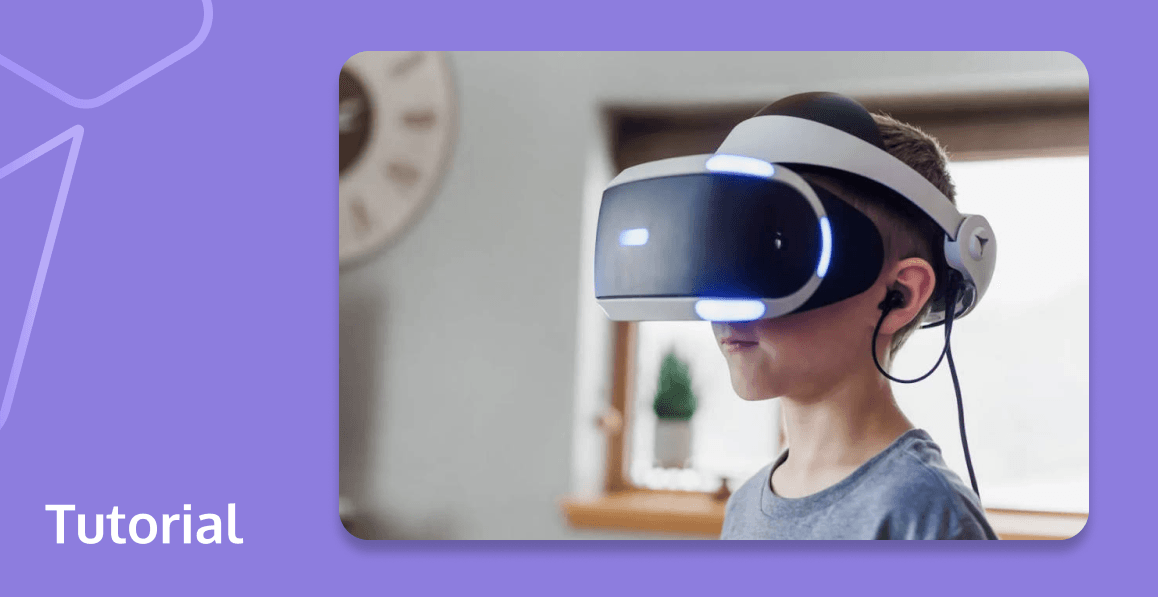
Web-based Augmented Reality (Web AR) is transforming how we interact with digital content directly through our web browsers. Unlike traditional AR applications that require downloading apps, WebAR brings augmented reality experiences to users with a simple URL click. This ease of access opens up new possibilities for engaging with content in innovative ways that blend our physical and digital worlds.
If you have no idea what is it or how it works, you come to the right place. This article will walk you through everything you need to know. Continue reading to discover how it can revolutionize your online experiences.
What Is Web AR?
WebAR, is a technology that allows users to experience augmented reality directly through a web browser, without the need for any additional applications or downloads. It uses a combination of technologies found in most modern web browsers, including HTML5, WebGL, and JavaScript, to integrate digital enhancements overlaid on the real world in real-time.
This approach to AR makes it highly accessible and scalable, as it can be used on any device with a web browser, from smartphones to tablets and even desktop computers. To be specific, an eCommerce website might leverage a web AR platform to allow customers to visualize how a piece of furniture would look in their own living room before making a purchase.

How Does Web AR Work?
WebAR operates by utilizing the capabilities of standard web technologies combined with the hardware features of a user's device to create augmented reality experiences directly in a web browser. Here’s a simplified explanation of the process:
Firstly, web based AR uses the camera on a user’s device to capture the real-world environment. It then processes this video feed in real time using JavaScript and frameworks like WebXR, which are built into many modern web browsers. These frameworks enable the browser to understand and interact with three-dimensional space, allowing for the placement of digital objects in a live camera view.
Once the scene is captured and processed, WebAR overlays digital content, such as images, animations, or interactive 3D models, onto the real-world image on the screen. This is done seamlessly so that digital elements appear to exist in the real world. For example, a user might point their phone’s camera at a specific object or location, and WebAR can overlay additional information directly related to what is being viewed, such as showing product details in a shopping experience or historical facts in a museum setting.
Advantages of Web AR
WebAR offers several benefits that make it an appealing technology for both users and developers. Here are some of the key advantages:
- Accessibility: WebAR can be accessed using any standard web browser on smartphones, tablets, or computers, eliminating the need for users to download and install specific apps.
- Ease of Use: Since WebAR works directly through the web, users can launch AR experiences instantly by simply clicking a link or scanning a QR code, making it highly user-friendly.
- Cost-Effective: For businesses and developers, WebAR reduces the cost and complexity of app development and maintenance because it uses web technologies and does not require multiple versions for different operating systems.
- Wide Reach: WebAR can reach a broader audience because it’s compatible with most modern web browsers across various devices, enhancing the potential for marketing and educational campaigns.
- Engagement: By integrating AR directly into web pages, WebAR can significantly increase user engagement by providing interactive and immersive experiences that are more engaging than traditional web content.
- Real-Time Updates: Changes and updates to WebAR content can be made quickly and easily without requiring users to update an app, ensuring that all users have immediate access to the latest content.
When to Use Web AR? (Examples of Web-based Augmented Reality Applications)
Web AR is versatile and beneficial in various scenarios where engaging, interactive experiences can enhance understanding, sales, or enjoyment. Here are some practical applications that showcase when to use Web AR effectively:
- Retail and eCommerce: Web AR allows customers to visualize products in their own space before purchasing. For instance, furniture stores can enable shoppers to see how a couch would look in their living room, adjusting colors and styles in real-time.
- Education and Training: Educational institutions use Web AR to bring complex academic concepts to life. Students can explore 3D models of human anatomy or historical artifacts directly from their web browser, enhancing both engagement and understanding.
- Marketing and Advertising: Brands can create interactive marketing campaigns that users can access via a simple web link. For example, a movie promo might let fans interact with virtual characters or scenes on their mobile devices, creating a memorable connection with the product.
- Real Estate: Real estate agents can provide virtual tours of properties, allowing potential buyers to explore homes and environments remotely, making the initial screening process more efficient and engaging.
- Cultural Exhibitions: Museums and galleries can offer augmented tours, where visitors view exhibits through their phones to see additional information or digital enhancements overlaid on the artifacts.
Conclusion
This guide has provided a comprehensive look at Web AR, explaining what it is and various practical applications. From enhancing online shopping experiences to enriching educational content and transforming marketing strategies, WebAR offers accessible and engaging augmented reality directly through web browsers.
By understanding and leveraging Web AR, you can significantly enhance your interaction with digital content. Whether you are a business looking to innovate or an individual eager to explore augmented realities, WebAR opens up new possibilities for interacting with and understanding the world around us. Embrace these insights to enrich your digital experiences and stay ahead in the rapidly evolving landscape of AR technology.
If you have any questions or need assistance, our support team is always ready to help. Please feel free to Contact Us or join us in Telegram.
FAQs
How Does WebAR Differ from Traditional AR Applications?
WebAR differs from traditional AR in accessibility and ease of use. Traditional AR typically requires users to download specific apps or use specialized hardware, whereas WebAR can be accessed directly through a web browser without additional software. This makes WebAR more user-friendly and accessible to a broader audience. Moreover, while traditional AR often focuses on creating immersive 3D environments ideal for gaming, WebAR is more suited for simpler applications like advertising and product visualization that benefit from quick and easy access
What Are Some Common Use Cases for WebAR?
WebAR is extensively used in marketing, retail, and education, among other fields. For instance, it enables interactive advertising directly on the web, which can be as simple as animating a product label or as complex as an interactive product demo on a business card.
What Browsers Support WebAR Technology?
WebAR is supported by most major web browsers, including Google Chrome, Apple Safari, Microsoft Edge, and Mozilla Firefox.


